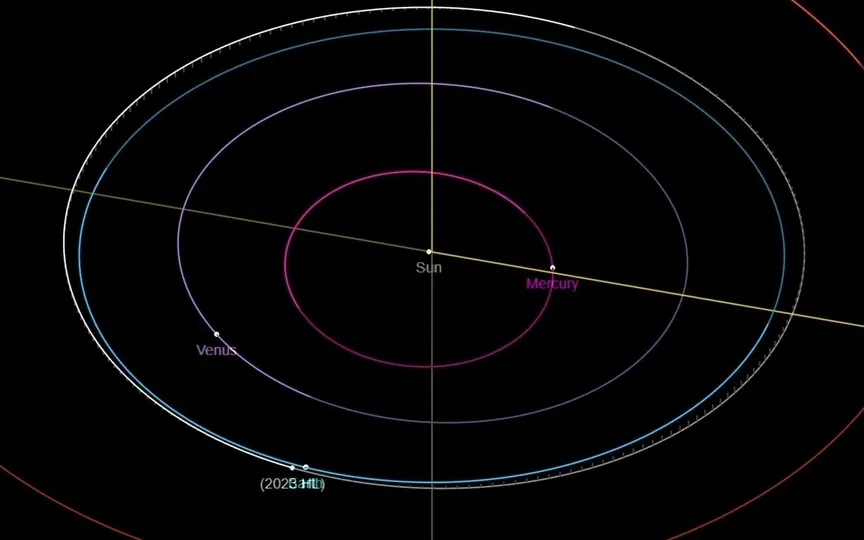Amor Group Asteroid to Make a Close Pass by Earth Today
NASA has released a warning regarding an asteroid that is anticipated to come closest to Earth in the near future. The asteroid, named Asteroid 2023 HL, is set to pass by Earth today, June 16, at a distance of 5.1 million kilometers. Although not particularly large, the asteroid is roughly the size of a house, measuring 45 feet in width, as per NASA.
But unlike other asteroids that pass the planet at terrifying speeds, Asteroid 2023 HL moves slowly and steadily at a speed of 3,730 kilometers per hour.
Other details
NASA has also revealed that this space rock belongs to the Cupid group of Near-Earth Asteroids, which are near-Earth asteroids whose orbits are outside Earth but inside Mars. The asteroid is named after the asteroid 1221 Cupid discovered by a Belgian astronomer. E. Delporte in 1932.
The first close approach of an asteroid in history occurred on May 24, 1977, when it came within 35 million kilometers. Its last approach was on June 16, 2009 at a distance of 2.2 million kilometers. After today, the asteroid will pass the Earth on June 23, 2035 at a distance of 5 million kilometers.
Asteroid Naming Process Explained
Asteroids are ancient space rocks left over from the early formation of our solar system about 4.6 billion years ago. Although these space rocks come close to Earth very often, do you know how they are named? According to ESA, the process of temporarily naming an asteroid begins when one observer spots it on two consecutive nights and then sends their findings to the International Astronomical Union’s (IAU) Minor Planet Center. The IAU assigns a temporary designation, typically consisting of a serial number, such as “2023 KT1”.
The provisional designation includes the year the asteroid was discovered, followed by two letters indicating the order in which it was discovered in that year. Now, another closely observed asteroid is expected to make its closest approach to Earth today.




